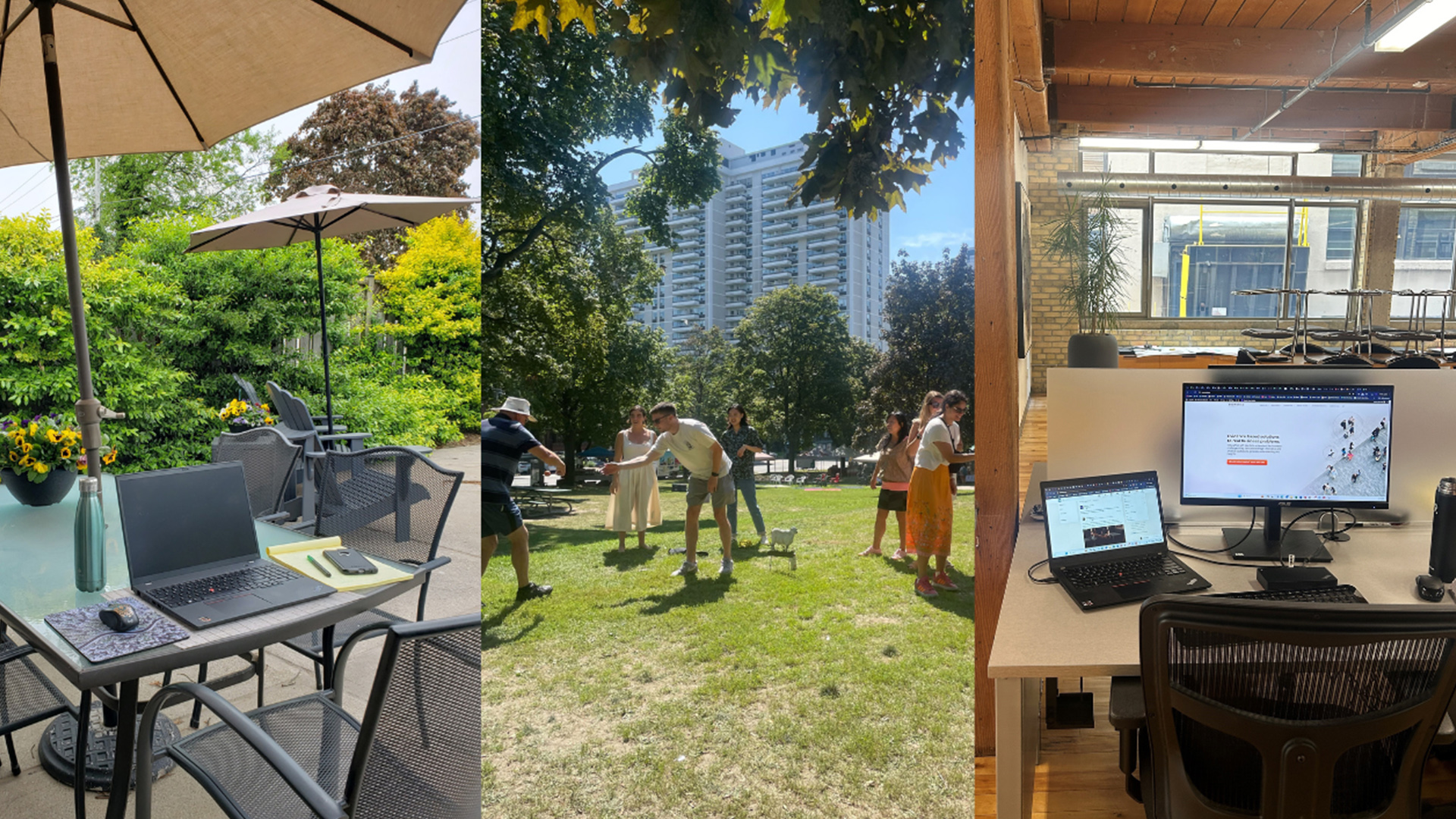Just because it’s digital doesn’t mean it can’t be real
ARTICLE
BY MICHELE CUNNINGHAM
Consumers want digital experiences to be balanced by human connection.
The past two years of COVID-19 restrictions have accelerated the digital transformation that was already underway, forcing reluctant users to adopt digital tools and organizations to adapt and digitize. School-age children are learning online and having virtual playdates and dance recitals. Older adults have learned to video chat – to connect with loved ones or for virtual medical appointments. My 75-year-old father now does online banking and grocery shopping seamlessly – both practices he insisted he’d never try. Even pets have had services move online, with virtual vet visits and online obedience classes. Many experiences that were once in-person only now have a digital twin (or cousin?).
Even as many jurisdictions loosen COVID-related rules, it’s clear that life has changed for good with more than half of Canadians predicting their online behaviours have been cemented moving forward. That’s in part because some people and organizations don’t want to give up the digital options they gained during the pandemic.
Moreover, in a recent Environics survey, nearly half of Canadians (46%) agree that, “The ability to connect to anyone and everything online lets us be more connected than ever before – in the best way possible.”
While there are obvious benefits of the technological advancements we’ve come to rely heavily on over the last few years, it’s not all up-side. A small majority (54%) of Canadians feel “digital connectedness is taking us away from the things and people that really matter in life.”
And larger majorities – 75% of Canadians and 78% of Americans – express a yearning for “real-life experiences, slowness and authentic human connections rather than more digitally-based lifestyles that new technology is enabling.”
With a return to tangible, real-life experiences on the horizon (in-person cocktail hours, travelling, shopping in stores, on-site collaboration at work), it might be tempting to neglect the digital realm for a while on the assumption that many people are “over it.” But brands shouldn’t become complacent. Even as many rush to connect in person, demand will remain for high-quality digital offerings and brand experiences that are consistent across channels. This was true before the pandemic and it’s true now. Brands looking to connect more meaningfully with their consumers should consider their brand experience holistically – across all touchpoints – and seek ways to creatively infuse real-life experiences and human connection in the digital realm. They should also look for ways to act as a tool or conduit enabling people to engage, connect and share experiences.
There are a number of recent examples of brands creatively navigating this new era, and working innovatively to bridge the gap between life online and off:

– VRBO, an online booking portal for vacation home rentals, is an excellent case of a digital brand enabling human connections and real-life experiences. In its most recent SuperBowl advertisement (A Place for Together), VRBO cases itself as a means to reunite, bond and celebrate with loved ones in carefully chosen locations.

– Callia, a Canadian start-up online flower delivery company, is on a mission to deliver more special moments to Canadians. In place of generic flower shop cards with messages in someone else’s handwriting, Callia offers “Greets”: personalized video messages from the sender. Callia delivers the video message with their hand-tied bouquets, making the delivery a deeply personal experience.

– Peanut, is an app and a community for women of various life-stages, born out of the need for a platform or tool that is more engaging and real than outdated (and unmoderated) online discussion boards: Peanut enables and encourages shared experiences through in-app communities, local meet-ups and a “friend-finder” function that connects its users to others nearby who are currently in similar life-stages and situations. New Moms can find and connect to other local new moms, women who are trying to conceive can connect with others, etc.

– Amazon Prime Video has recently launched a new feature in Canada called Watch Party, which lets users chat with up to 100 friends while watching the same TV show or movie in real time. By enabling fully synchronized viewing and integrated chat, the feature prevents dreaded spoilers and helps users avoid the distraction of switching between multiple screens – keeping friends on the same page (or frame).
What can other brands learn from these examples?
First, understanding what people value most about your offering helps you think creatively about how to enhance it. (Flower-senders want to express a feeling beautifully. New moms are often physically isolated – but longing to share the joys and challenges of the experience.) Importantly, improving your digital presence doesn’t have to mean a dramatic overhaul of your brand or an ambitious activation.
A recent example of a simple and perfect digital touchpoint with customer service at Knix: I clicked on a pop-up chat “bot” and, to my surprise and delight, a real person answered immediately. We had an actual conversation (complete with humour and emojis). The encounter took just a few minutes, was entirely digital – and was so refreshingly human that it cemented my long-term loyalty.
Like your customers, your brand lives both online and off. You can create brand experiences that are positive and “real” by giving thoughtful consideration to the various touchpoints by which your customers connect with you – online and off – and seeking opportunities to enhance them with an awareness of what people want and expect from you as they browse, shop, purchase and connect with peers across different contexts.
If you enjoyed reading this and would like to gain more industry insights specifically related to our mindsets and behaviours in the digital space, my colleagues have been creating some amazing content related to the digital economy: From Achieving Brand Loyalty with Online Communities to Effective Hyper-Personalization, Users Becoming More Savvy About Privacy Trade-Offs to Establishing a Personal Sense of Control, our team have got you covered.
Find out how our Market Strategy team can help your organization
Related insights



Toronto
366 Adelaide Street West
Suite 101, Toronto, ON
Canada M5V 1R9
416 920 9010
Ottawa
135 Laurier Ave W.
Ottawa, ON
Canada K1P 5J2
613 230 5089
Calgary
421 7th Ave SW
Suite 3000, Calgary, AB
Canada T2P 4K9
403 613 5735
